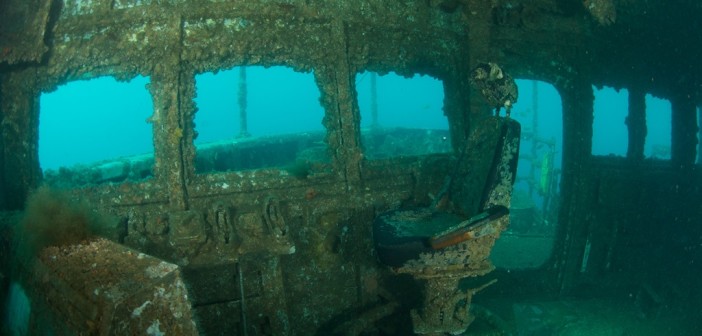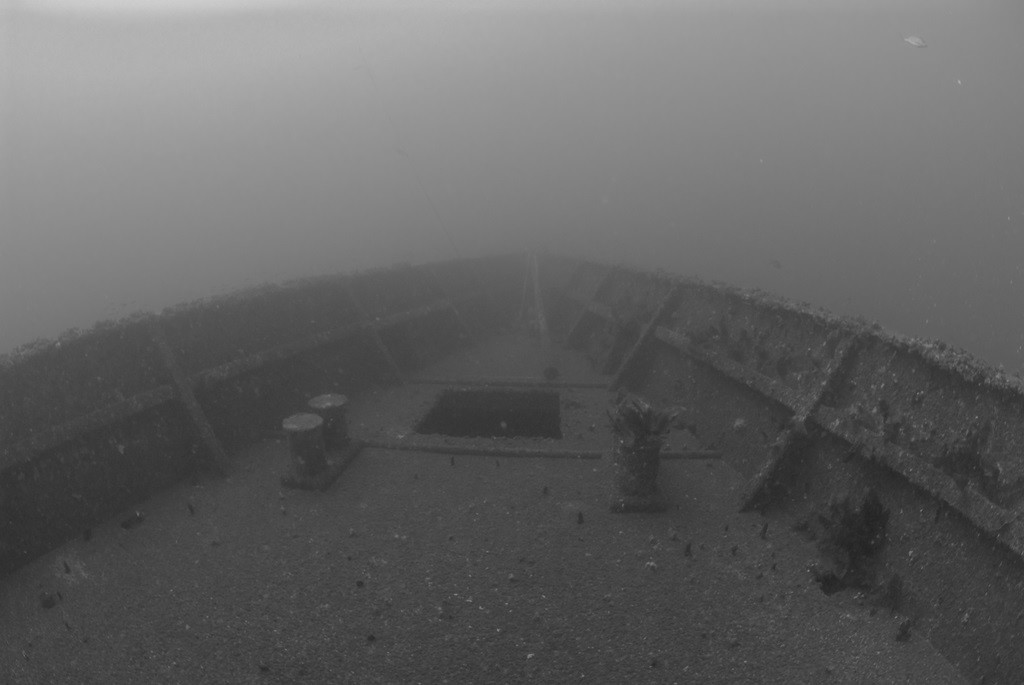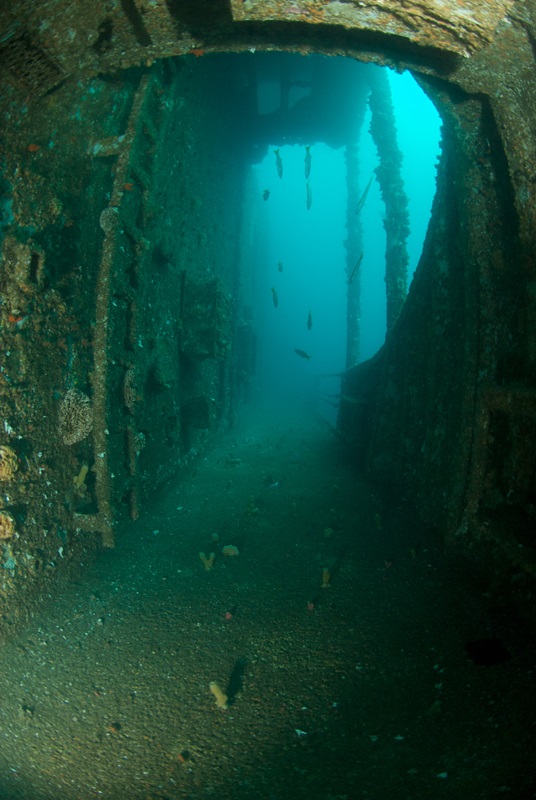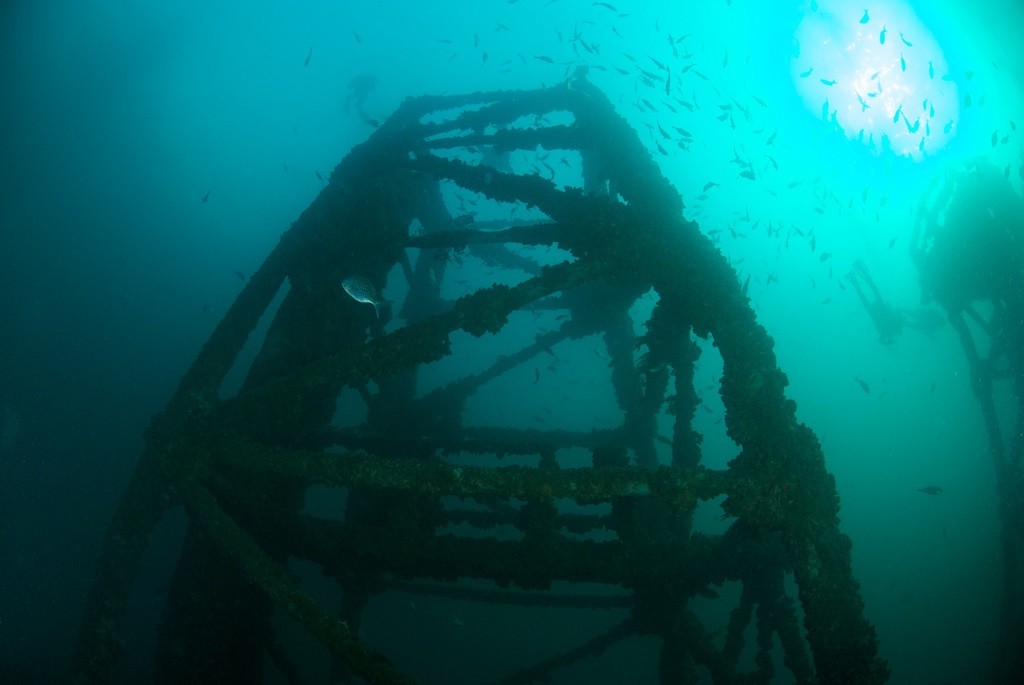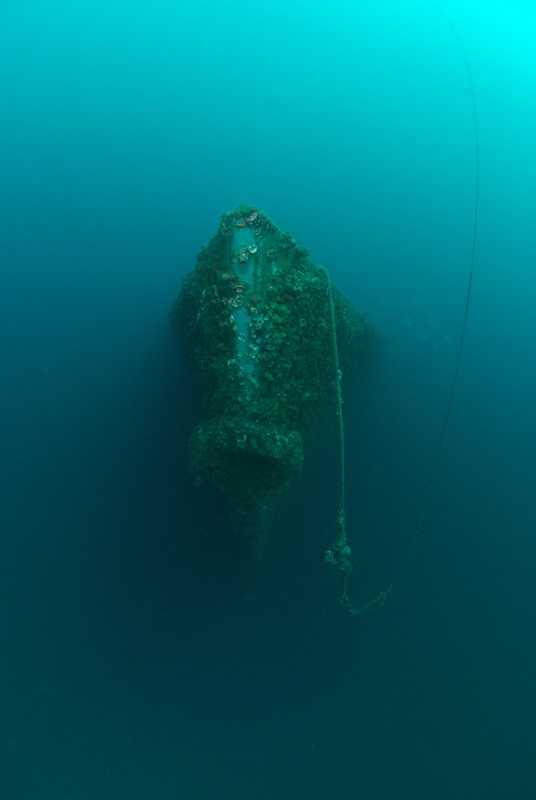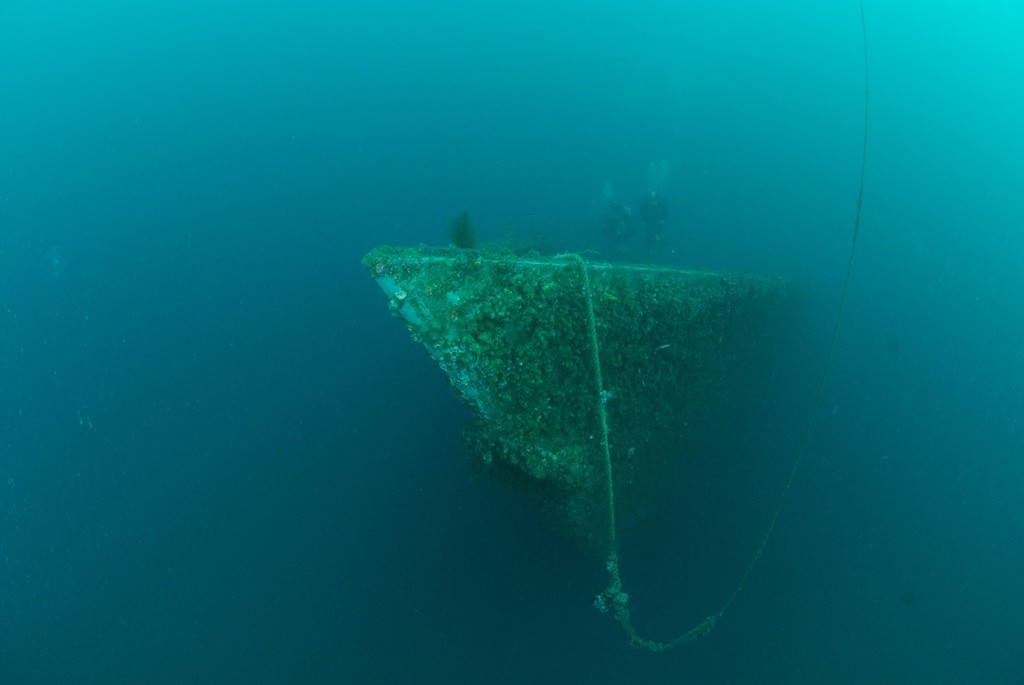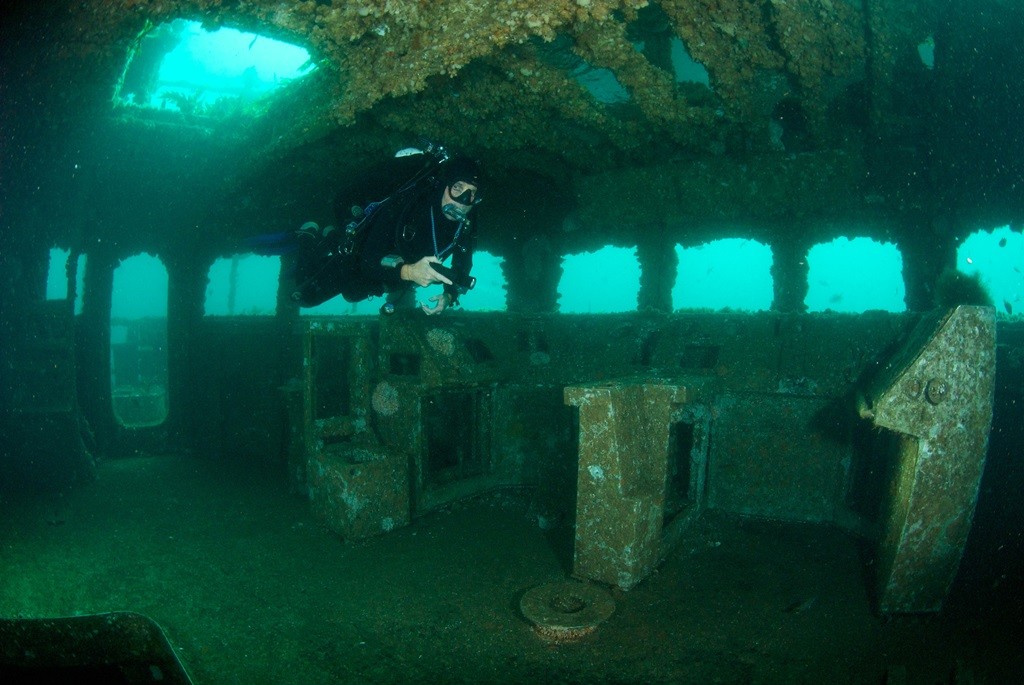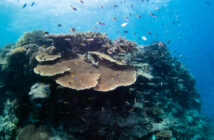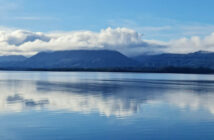Mystery, exploration and the sense of being in a whole new world where few dare to venture – this sums up my reasons for SCUBA diving and, in particular, wreck diving. In my 20 years of diving all over the world, I speak from experience when saying that wreck diving is an absolute rush. From gearing up, listening with great enthusiasm to the dive brief or giving an enthusiastic brief (if I am the guide), to throwing myself and my gear aboard the boat that will take us out to sea, and then our descent line, it is all a rush.
Most divers’ wreck dives begin with a flight and a cab from the airport before they even get their dive bag sorted so, living now on the New South Wales Central Coast, it’s not lost on me the gift it is that I live within a stone’s throw from the new home of the Ex-HMS Adelaide.
The Ex-HMS Adelaide was sunk with a hole in its hull on an historic day in April 2011 after a pod of dolphins finally let the explosives blokes do their work. The dolphins had kept us 18 000-odd locals waiting on the beach to watch the fireworks for two hours before the fuses were finally lit, as they played beneath the ship as if on purpose to tease us. Then finally the frigate bomber found its new home in 30 to 40 metres of sea bed off the very popular Avoca Beach, inspiring the Central Coast dive shops to kick-start their marketing campaigns that have and will continue to draw divers to our shores to explore this remarkable and rare site. Frigate scuttling’s are rare. It was a lucky day the day they decided to sink her on my doorstep.
The HMS Adelaide was instrumental in 1990 to 1991 in the Gulf War, in the Peace keeping operations in East Timor from ‘99 to ‘06 and it was also deployed to the Arabian Gulf between ’01 and ‘04. In ’97 it received the honour of a personal congratulation by Queen Elizabeth II for its work with the Australian Defense Force conducting a dramatic rescue in the Southern Ocean when its Sea King helicopter was launched to retrieve round-the-world yachtsmen Theirry Dubois and Tony Bullimore.
Researching the retired Australian Navy wreck prior to diving it is an absolute must to heighten the excitement. Reading about the frigate gives your mind’s eye the opportunity to envisage life aboard the vessel in its heyday, also to study its deck plans before descending down the bow or stern lines and consider that the wreck you are about to enter was once the home away from home for 200+ crew members. But let me assure you, even the most studious diver will be unprepared for the glory of the moment when you enter the ship for yourself, for real.
I love the 15-metre ‘wow!’ that you get every time you take to the depths and see the Adelaide come into view. She is not eerie as some wrecks are, instead she feels welcoming to divers and the local sea life, as her once pristine decks are now covered with plants, corals and rust has begun eating into some of the once definitive edges. Her impressive 4100 tonnes, seen from the descent via the stern or bow, appears mostly undamaged and mighty – resting herself quietly on the sea floor. You know there are 138.1 metres of metal to scout or enter, depending on your experience – and your guts.
Novice divers will find an initial exploration of the upper deck, bridge and masts excitement enough – there’s plenty to see on one cylinder of air. Her depth at these parts is an easy 30 metres, excluding no diver with the drive to see her. However a diver with Nitrox or, better still, a re-breather can take their time and do some exploring of the vast aircraft hangers at the frigate’s deeper stern, also its lower decks and the ammunition stall. We’ve only just begun to access this vast and mighty ship. The element of discovery is one of its biggest attractions as divers seek new sections to enter into, such as the heart of the ship – its engine room.
The Adelaide is one big ship languishing over plenty of sea floor. Visitors simply must sit in the captain’s chair, chat on the phone, check out the console and chart tables from the bridge and enjoy the amenities in the crew’s cafeteria. Get a photo taken of the crew’s bunk beds or just float on down the huge hole where the missile launcher used to be. It’s VAST!!!
Before the Adelaide was sunk, she was prepared for SCUBA divers with holes cut into it on all the decks to make for a gloriously comfortable dive with plenty of exits – or entries for those experienced divers who love to penetrate deep into the ship. Diving has its risks, as we all know, but the Adelaide has been stripped of most major obstacles (except the toilets on lower decks) and with its plenty of tailor made openings, the accessibility in and out really does minimize the stress for those concerned. So at 30+ metres, there’s enough to keep us entertained and little worry about finding your way out.
HMS Adelaide is thriving in its new career as a SCUBA playground and artificial reef. Beautiful sea life has taken up residence on board over and among its metal shell, adding yet another element of intrigue for you, my diving compatriots.
Keeping an eye on divers at 20 metres whilst circling the tops of the communication towers are huge 30-40cm bat fish, and just below there are plenty of bream under the communication masts – I’m talking hundreds of fish circling inside the comms tower. Wobbegongs have been spotted snoozing on the top deck and schools of yellow tails patrol the flight decks. Come in close and you will find vibrant nudibranchs tucked away in metal seams and the sub-tropical corals are already flourishing. Ensure your torch batteries are well charged as you will see so many colours in the majestic plants and corals on board. Pink sponges have sprouted, as have the elegant purple Jewel Anemone which dance and sway with the surge – but you will have to look carefully for these little gems. On my most recent dive I ascended with a friendly crab hanging onto my right arm – unbeknown to me of course – my buddy pointed him out. Considering how recently the ship was sunk, there is an incredible variety of plant and sea life settled there. It’s a treat, no doubt.
Divers who have not yet dived the HMS Adelaide are, in a word, CRAZY. It’s a gift – easy to get to just an hour north of Sydney and our school just up the road with everything you need to ensure a superb day diving. The visibility is by far better in winter than in summer so don your drysuit and join us exploring this modern day diving icon fresh from the Australian Maritime archives.
It is certainly worth the $18 fee we pay to Central Coast Tourism for a day of diving the Adelaide – a small thank you from us divers for providing such an awesome wreck for us to explore.
Article kindly submitted by Lyndi Kim Leggett, Advanced Instructor at Dive Imports Australia




